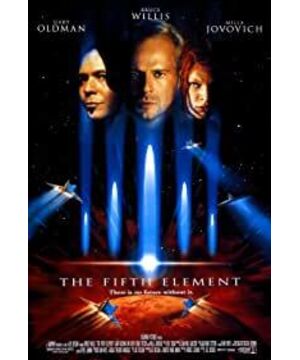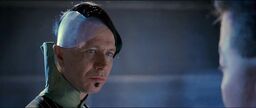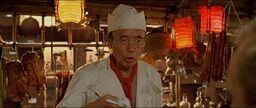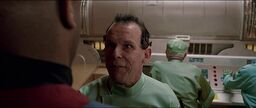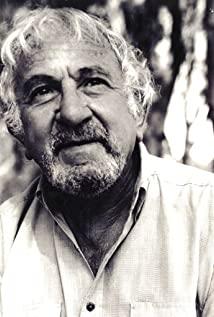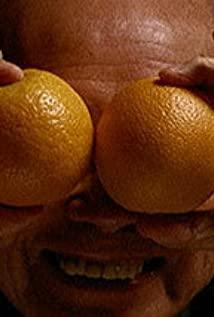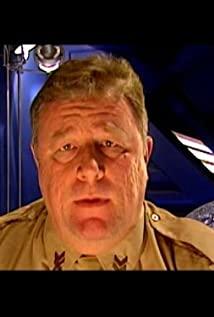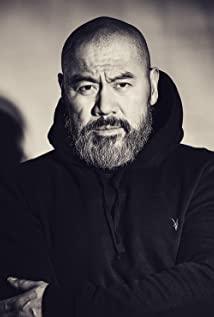This film is the opening film of the 50th Cannes Film Festival.
This is another science fiction film made by Luc Besson in "After the War". For him, shooting science fiction films is really familiar. From the age of 16, the talented director has developed a keen interest in such subjects. He said: "When I shoot a movie, I hope to lead the audience away from their daily life and go to places that can only be visited in dreams, such as underground, under the sea or in space. Out of dreams and escape, I think about this. This kind of movie is very fascinating."
However, Luc Besson did not know what the fifth element was at the time. It was his father who told him Plato's five-element theory. Plato believes that the four elements of the theory of material formation in ancient Greece: earth, air, water, and fire, are all composed of mathematical figures. These patterns are composed of particles of four elements: fire particles are regular tetrahedrons, air particles are regular octahedrons, water particles are regular icosahedrons, and soil particles are cubes. The fifth type of regular polyhedron is a dodecahedron formed by a regular pentagon. This is the fifth element that composes the various substances between heaven and earth, which is what people call "ether". The fifth element symbolizes the spiritual power of human beings and is human love.
Luc Besson is the most popular director in France today. His early works "This Killer Is Not So Cold", "Metro" and "Blue Sea and Blue Sky" inherited the tradition of French art films, romantic and delicate, delicate and elegant, but he pays attention It was difficult for this type of film to jump beyond the borders, and even more difficult to enter the Hollywood market, so it was forced to change its style and produced high-tech and large-scene films in pursuit of high visual effects "The Fifth Element", "Nikita" and "The Holy Woman" "Jan of Arc" has achieved good economic benefits.
"The Fifth Element" was rated as the best science fiction movie in the 1990s because it is not a purely entertainment film. Although the special effects of the movie are dazzling, the gunfight scene is suffocating, and the gags are endless, Luc. From the beginning to the end of the film, Besson has always run through his concept of war: the use of violence to counter violence will only bring disasters to mankind, and can only escalate the scale of the war. Only love can save the world.
The future world that the film shows to the audience is very peculiar. Luc Besson said: "We have studied all human history before we can calculate the most reasonable age of 2259. The time of the story is very precise: March 18, 2259. At 2 o'clock in the morning, what will the world be like at that time? How do people live and think? This is very important for me to create this story, because I want the audience to accept this real possibility of the future." The language of Li Luo in the film It was created by Luc Besson and perfected by Milla Jovovich. By the end of the filming, the two could talk in this language.
Besson put forward a hypothesis: If there are lives in another universe, and these lives are not dominated by "good", but dark evil. The 23rd century in "The Fifth Element." Human beings shuttle between the planets, and the evil forces feel uneasy. Besson explained: "Good and evil are opposites, just like fire and ice. The greater the good, the more evil will be aroused and angered."
In order to bring the future world to the screen, the director once again invited designer Dan Weir. In 1988, he participated in the filming of Luc Besson's "Blue Sea and Blue Sky". In 1993, under the supervision of Dan Weir, a team of designers and illustrators began preparatory work. In addition, Luc Besson also invited the famous French costume designer Jean-Paul Gautier, who combined avant-garde, classic and exotic customs together, and the effect was breathtaking. Nick Dudman, who has acted as a makeup artist in "Batman" and "Alien 3" and other films, is responsible for the production of automatic puppets, alien space suits and a large variety of props. The clothing of human beings in the future will complement each other's imagination in the film, but they will become one with each other.
Besson said: "Nick always presents the best to us, and what convinces me the most is his enthusiasm for work." After taking the location in Mauritania, it opened at the Pinewood Studios in London on January 8, 1996. prelude. This film is the fourth collaboration between Luc Besson and producer Patrice Ledu, chief operating officer of Gaomeng Pictures. The film cost 90 million U.S. dollars and was the highest investment film of Gaomeng Pictures at the time.
As we all know, "This Killer Is Not So Cold" has achieved greater success than "Nikita", Besson's reputation in the international film industry has also been further improved, and the Columbia company immediately took a fancy to the filming plan of "The Fifth Element". However, Luc Besson insisted that this film belong to France, although most of the actors are American, and the investor Gaomeng has left key technical positions (photography, music, editing, etc.) to the French, so This film received funding from the French National Film Center. Although Bruce Willis was the top spot in advertising, the film was still coldly received in the United States. The box office revenue outside France far exceeded 200 million US dollars, while in the United States, it was only slightly more than 100 million. The futuristic composer Eric Serra, nicknamed "RXRA", composed the music for "The Fifth Element", and his soundtrack has sold 750,000 copies worldwide. The young Israeli female singer Nurit gained fame for the song "Little Light of Love" in the film. After watching this film, French audiences agreed that the message that Luc Besson's film brings to people is that "time is of no importance, only life and life are the only important things". This is a futuristic epic.
The rise of Luc Besson and the path he has traveled will inevitably arouse people's thinking about French cinema as a whole. France produces 130 to 140 films every year, 80% of which are wholly or mostly invested by France, and France ranks second in the world's film industry. There are 4,500 cinemas in France today, ranking first among EU countries.
The quality of French films is well known all over the world. Some directors such as Jean Renoir, Reina Claire, Marcel Carne, Claude Udan-Laha, Jacques Becker, Henri-Georges Cruzo, Jean Cocteau, etc. , They had a profound influence on world cinema before and after World War II. At the end of the 1950s and the beginning of the 1960s, some young filmmakers set off a wave of innovation to the classic films of their predecessors. This stage is called "new wave" movies, and its representative figures such as François Truffau and Louis Ma Le, Jean-Luc Godard, Claude Chabrol, Alain Renai and Eric Romer, among others. Since then, from the 1970s to the 1980s, many French filmmakers established the status of French cinema in the world film scene with a large number of different styles of films, such as Jacques Rivitt, Claude Soudai, Claude Lerouche, Mo Rees Piara, Bernard Davignier, Bertrand Billiet, Claude Bailey, Alain Gouneou, André Tessine, Patrice Lecomte, Jean -Paul Harpano and so on. In the 1990s, Jean-Jacques Arnault, Jean-Jacques Benéx, Luc Besson, Eric Rochamp, and Christian Wansang appeared. Recently, another generation of newcomers have flooded the French film scene. For example, Pascal Ferrand, Cedric Clapis, Manuel Poirier, Mattieu Casovitch, Lawrence-Fee Leila Barbosa, Sandrine Vese, Arnold Desprechen and others. The common feature of this group of young filmmakers is to reflect the dark side of today's French society in the film. In the current situation of the French film scene, Luc Besson’s strategy is undoubtedly correct.
View more about The Fifth Element reviews


